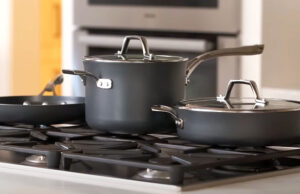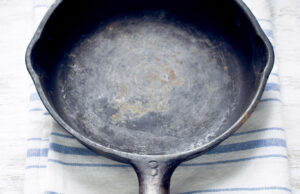Convection ovens are amazing kitchen appliances that can help you cook your meals faster and more evenly. But like any other appliance, they come with their own set of problems that can affect cooking time and performance. If you’ve noticed that your convection oven isn’t cooking your food as quickly or evenly as it should, it can be frustrating. But don’t worry! In this post, we’ll walk through some of the most common convection oven problems that can impact cooking time, and offer practical solutions for fixing them. So, grab a cup of coffee, and let’s dive into these issues so you can get back to cooking without any hiccups!
1. Incorrect Oven Temperature
One of the most common issues with convection ovens that can cause your cooking times to be off is an incorrect oven temperature. This could mean your oven is running too hot or too cool, leading to either overcooked or undercooked food. Even a few degrees of difference can affect your meal’s final outcome, especially when you’re baking or roasting.
Why Does This Happen?
Several factors could cause the temperature in your convection oven to be inaccurate. Sometimes, the oven’s built-in thermostat might not be calibrated properly, which means it’s unable to read or maintain the correct temperature. Over time, the temperature sensor may also wear out or malfunction, leading to inaccurate readings. In some cases, the oven door may not seal correctly, allowing heat to escape and causing the oven to work harder than necessary.
How to Fix It
If you suspect that the oven’s temperature is the culprit, the first thing you should do is check it using an oven thermometer. These are relatively inexpensive and easy to use. Simply place the thermometer inside the oven, set it to the desired temperature, and let it sit for a few minutes. Afterward, compare the thermometer reading with the oven’s display.
If the temperature differs, here are a few things you can do:
- Calibrate the Oven: Some convection ovens allow you to calibrate the temperature settings through the control panel. Check the manual to see if this option is available. If you’re unsure how to do this, consult your manufacturer’s instructions or look up online guides for your specific oven model.
- Replace the Temperature Sensor: If calibration doesn’t work, the temperature sensor might need to be replaced. This part is typically easy to find online or in appliance stores. However, if you’re not comfortable replacing it yourself, it’s best to call in a professional technician.
- Seal the Door Properly: Ensure the oven door closes tightly. If the door is damaged or the seal is worn out, heat could escape, causing uneven cooking temperatures. Replacing the door seal is often a simple fix that can make a big difference in cooking times.
Preventative Measures
- Regularly check and calibrate the oven temperature to ensure accuracy.
- Avoid frequently opening the oven door during cooking to prevent heat loss.
2. Blocked or Dirty Fan
The fan in a convection oven plays a vital role in ensuring even heat distribution. When the fan is obstructed by dirt, grease, or food debris, it can cause uneven cooking, longer cooking times, and poor results. This problem is often overlooked but can have a significant impact on your cooking efficiency.
Why Does This Happen?
The fan is responsible for circulating hot air around the food. If it’s blocked or dirty, air circulation is impaired, leading to hotspots in the oven. Grease buildup and crumbs can accumulate over time, making the fan less effective at doing its job. This issue can be especially noticeable when baking or roasting delicate foods.
How to Fix It
- Clean the Fan Blades: Start by turning off and unplugging the oven for safety. Use a damp cloth or sponge to wipe the fan blades gently. For stubborn grease or debris, you may want to use a small brush to reach tight areas. Be careful not to damage the fan in the process.
- Check for Obstructions: Sometimes, the fan’s vents or grill may be blocked by food particles or residue. Open the oven and inspect the fan area for any visible obstructions. Remove any items that could be preventing airflow.
- Deep Clean the Oven: If you haven’t cleaned your oven in a while, it may be time for a deep clean. Use an oven cleaner or a natural solution like baking soda and vinegar to clean all surfaces, including the fan. Make sure to wipe away any cleaner residue afterward.
Preventative Measures
- Regularly clean your oven, including the fan, to prevent debris buildup.
- Use a drip tray or line your oven with parchment paper when cooking greasy foods to minimize splatters and buildup.
3. Faulty Convection Fan Motor
While a blocked or dirty fan is a common cause of poor performance, sometimes the issue lies with the fan motor itself. If the fan motor is faulty or malfunctioning, it can prevent the fan from spinning correctly, resulting in uneven cooking and longer cooking times.
Why Does This Happen?
Over time, the fan motor in a convection oven can wear out or become damaged due to age, excessive use, or mechanical failure. When the fan motor stops working, it can significantly affect the oven’s ability to cook food evenly.
How to Fix It
- Test the Fan Motor: If you suspect the motor is faulty, check to see if the fan spins when the oven is on. If you hear unusual sounds or the fan doesn’t turn at all, the motor might be broken.
- Replace the Motor: Replacing a fan motor usually requires some technical knowledge and expertise. If you’re not comfortable with DIY repairs, it’s best to call a professional technician to replace the motor for you.
- Check the Wiring: Sometimes, the problem might be due to faulty wiring or loose connections. If you’re experienced with electrical work, check the wiring for any visible issues. Again, if you’re unsure, it’s best to leave this task to a professional.
Preventative Measures
- Avoid overloading your oven, which can put extra strain on the fan motor.
- Periodically inspect the fan motor for any signs of wear and tear.
4. Incorrect Rack Positioning
Convection ovens rely on proper air circulation to cook food evenly. If the racks inside the oven are positioned incorrectly, it can block airflow, leading to uneven cooking and longer cooking times. Many people simply place their food on the middle rack without thinking, but this isn’t always the best spot for even cooking.
Why Does This Happen?
Improper rack positioning can happen if you’re not following the recipe guidelines or if you’re cooking larger items that don’t fit perfectly on one rack. When the racks are placed too high or too low, it can disrupt airflow and prevent the convection fan from circulating heat evenly.
How to Fix It
- Adjust the Rack Position: Place your food on the middle or lower rack to allow for proper air circulation. The exact position will depend on the type of food you’re cooking, but as a general rule, avoid placing food too close to the oven walls or on the top rack, where heat may be more concentrated.
- Use Multiple Racks for Large Meals: When cooking large meals or multiple items, use more than one rack but make sure there is enough space between them for the air to circulate. You can even rotate the items during cooking to ensure they cook evenly.
Preventative Measures
- Always follow the recipe’s rack positioning recommendations.
- Be mindful of the size of the food and adjust the rack position accordingly.
5. Faulty Temperature Control Knob or Digital Display
In some cases, your convection oven may show the correct temperature on the display, but it might not be heating to that temperature due to a faulty temperature control knob or digital thermostat. This can lead to extended cooking times, undercooked food, and frustration.
Why Does This Happen?
A faulty temperature control knob or digital thermostat can mislead you into thinking the oven is at the correct temperature when it’s not. If the thermostat is broken or malfunctioning, the oven may either overheat or underheat, causing significant issues with cooking times.
How to Fix It
- Check the Control Knob: If the control knob feels loose or doesn’t click into place properly, it might be broken. In this case, you may need to replace the knob or the internal components of the control system.
- Replace the Thermostat: If the problem seems to be with the digital thermostat, it’s a good idea to replace it. Depending on your oven model, this might be a relatively simple task, or you may need a professional technician to handle it.
Preventative Measures
- Handle the control knobs gently to avoid wear and tear.
- Ensure that digital displays are clean and free of moisture to prevent malfunctions.
I hope this article helped you identify and fix some common convection oven problems that affect cooking time. Whether it’s a temperature issue, a fan problem, or faulty controls, these problems can often be solved with a little effort. Regular maintenance and cleaning can go a long way in keeping your oven in top shape. Happy cooking!
Frequently Asked Questions
Is it normal for a convection oven to make noise?
Yes, it’s normal for convection ovens to make a slight noise when the fan is running. However, loud or unusual noises may indicate a problem with the fan motor or fan blades.
Can a convection oven cook faster than a regular oven?
Yes, convection ovens cook faster than regular ovens because the fan circulates hot air, which speeds up the cooking process.
Do I need to adjust cooking times when using a convection oven?
Yes, in most cases, you’ll need to reduce the cooking time by about 25% when using a convection oven, or lower the temperature by 20°F to get the best results.
Is it safe to open the oven door while cooking?
It’s okay to open the oven door occasionally to check on your food, but try to minimize this to prevent heat from escaping and affecting cooking time.
Can I use aluminum foil in a convection oven?
Yes, you can use aluminum foil in a convection oven, but be careful not to block the fan or obstruct the airflow. Avoid placing foil on the fan or heating elements.
Do I need to preheat a convection oven?
Yes, preheating is still important in a convection oven to ensure the temperature is accurate before you start cooking. This helps achieve the best cooking results.
Is it possible to cook multiple dishes in a convection oven?
Yes, convection ovens are great for cooking multiple dishes at once because the fan ensures even heat distribution. Just be sure there’s enough space for air to circulate around each dish.
Can I bake cakes in a convection oven?
Yes, you can bake cakes in a convection oven, but keep an eye on the baking time. You may need to lower the temperature by 20°F to prevent overbaking.



